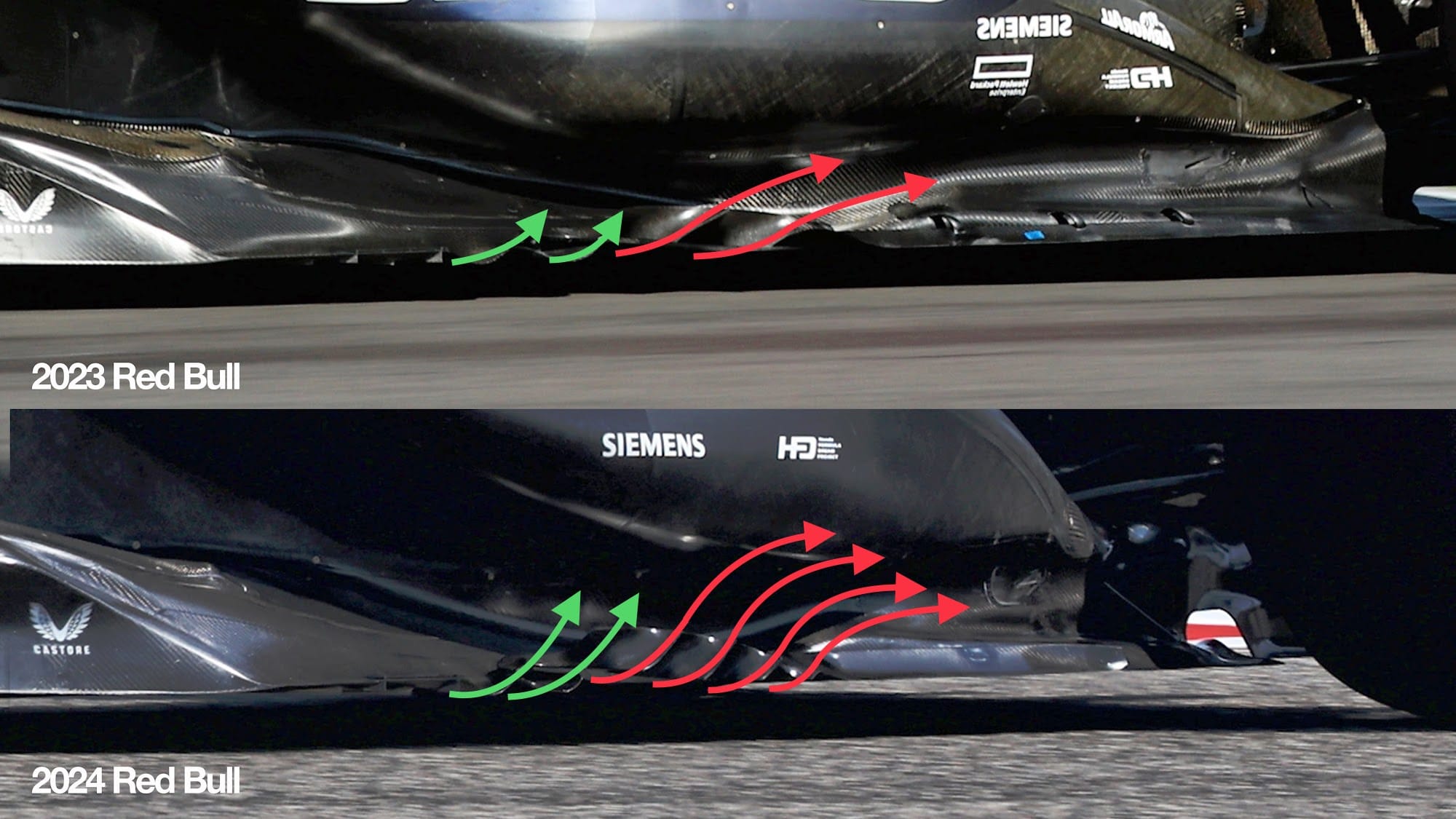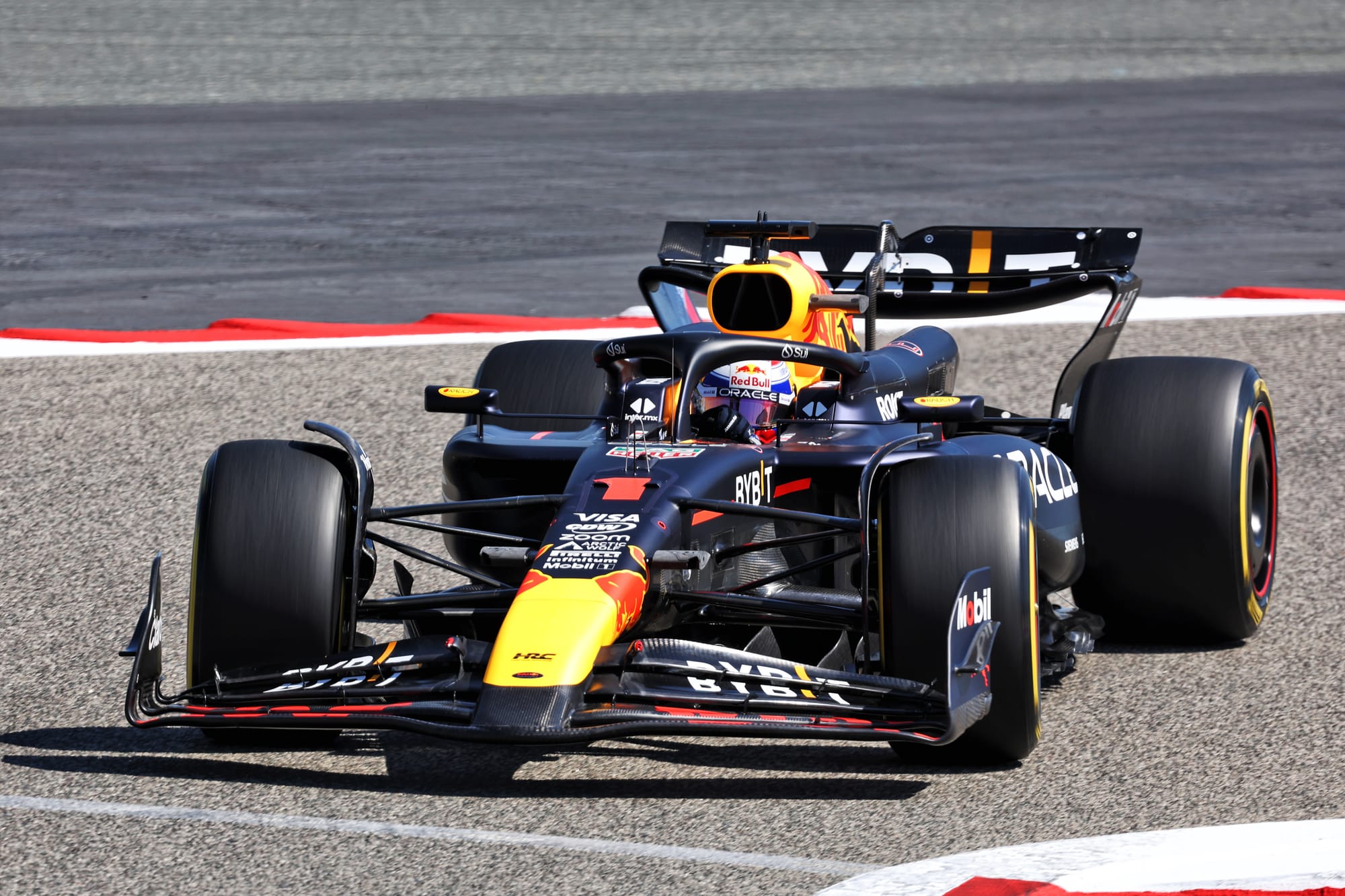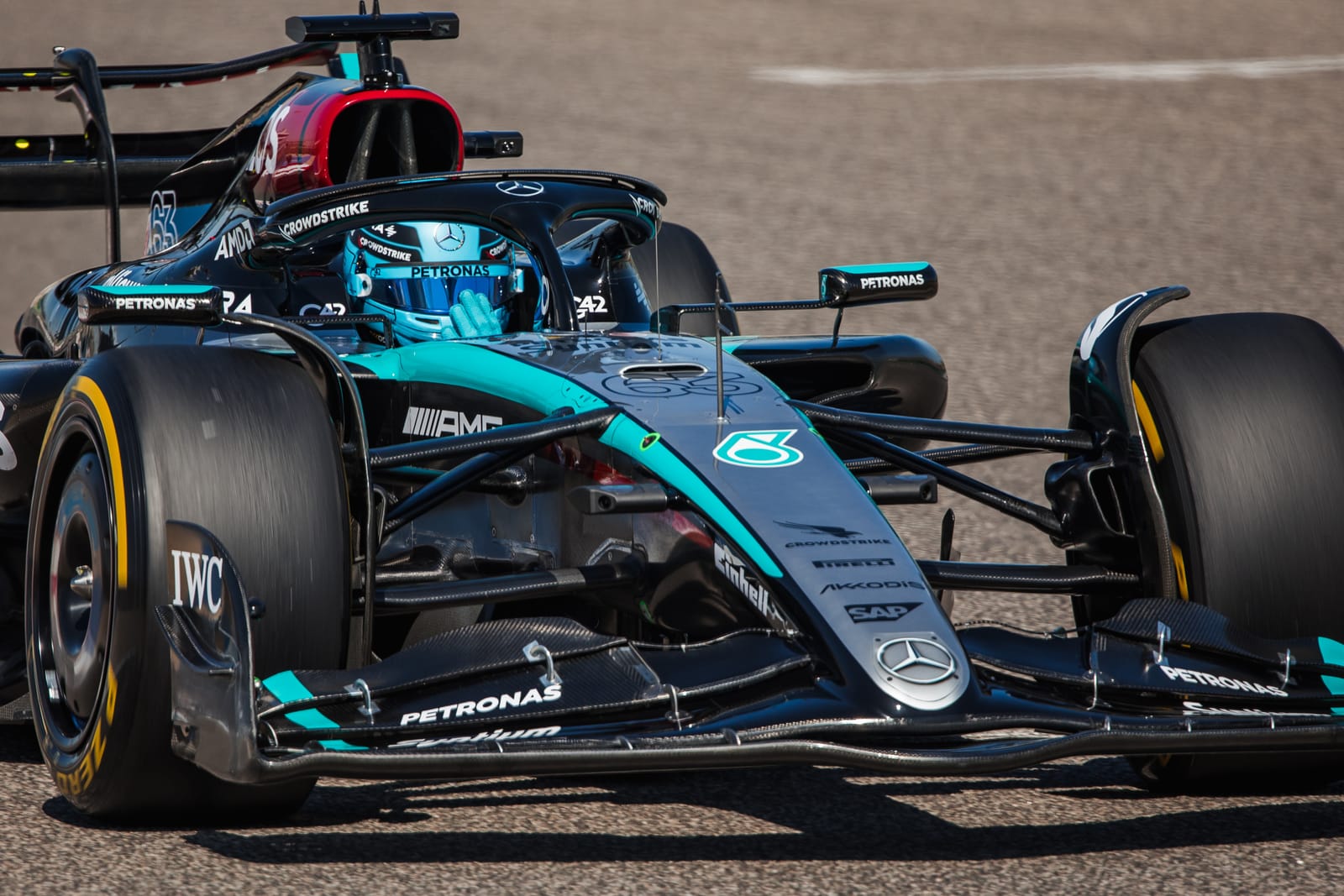

It is far from being a duplicate of Mercedes’ “zero” sidepod concept, despite the fact that this apparent change in direction made quite a commotion.
Even though Red Bull is one of the most reclusive teams in Formula One and tries its hardest to keep things hidden from curious observers, our keen-eyed photographers have somehow managed to get a few more candid photos.

We frequently ponder why the bodywork has so many bumps and lumps; the major reason is to accommodate all of these electronic and cooling devices.
I think the parts (above) that I have indicated in red and yellow are radiator cores, which cool the engine’s water and oil systems. Airflow is still necessary to remove the system’s overall heat, even though the bottom one may be an intercooler. All that is necessary for these autos to function is the “basic material.”
All of this “material” needs to have lovely, somewhat smooth, aerodynamic body surfaces applied to the outside.
I have indicated in green (above) what I think is the radiator input duct in this image.

It was on the sidepod’s upper surface last year; this year, it is beneath the sidepod’s upper surface (green highlight), nonetheless resembling a letterbox-shaped entrance that is positioned as high as feasible.
The source of mystery and uncertainty has been the vertical entrance (blue arrow above). From the first images we saw, it appeared to be a straightforward aerodynamic turning vane. But now that I’ve seen it up close in the pitlane, I can tell it’s an inlet duct going “somewhere.”
I’m not sure what is cooling, but if I combined the areas of the yellow and higher green inlets, they seemed bigger to me than what Red Bull ultimately obtained the previous year.
It’s possible that the boundary layer accumulation on the chassis’ side is also being managed by this vertical duct.
The orange arrows above illustrate how the airflow simply flows over the side of the chassis, allowing the higher-energy airflow (seen by the white arrows) to continue around the newly created, somewhat broader chassis side surface.
The airflow nearest to the car surfaces, known as the boundary layer, can build up on the side of the chassis and cause the chassis to appear wider than it actually is. It can also lower the mass flow and flow velocity in the undercut area of the chassis.
GROUND LEVEL VIEW + TOP LEVEL THOUGHTS
Even though testing has only begun, my first impression of the Red Bull on the track early today was that it lacked the front grip that Verstappen was hoping for. There were a few instances where the front end went into severe understeer because it appeared to be a little lethargic.
But by the time we broke for lunch, everything was going according to plan. Given that Verstappen was the fastest, Red Bull had to have figured out how to solve the first issue.
Why is Mercedes certain that its fake wing is acceptable?
Red Bull has been setting the standard for graphic concepts for the past few seasons, but to everyone’s astonishment, it has quietly shifted course for 2024.
The comparative image below shows that there is not a significant difference between the plain view body profile (green highlight) and the other one.
Red Bull lifted the radiator inlet’s lower side twice during the previous season, but that actually gave it no where to go if it still desired an intake. The team just did the opposite.
The divider that divides the overbody airflow from the sidepod undercut airflow is now likely five centimeters higher overall since the inlet is beneath the top body surface.
In fact, there are striking similarities in the profile of the underfloor’s leading edge (blue emphasis above). Therefore, even if it appears to be significantly different, the change is actually pretty slight. But Red Bull has been able to be more aggressive with the floor portion indicated by the red ellipse because of the enhanced airflow through the sidepod undercut.
Upon closer inspection, we can observe that there are now four outside turning vanes instead of just two (see the red ellipse above). The twin forward, smaller vanes (green ellipse above) are still present on Red Bull.
Upon closer inspection, Red Bull’s extra-large sidepod undercut and aggressive turning vanes (red arrows) enable it to draw more airflow out from underneath the front corner of the floor (green arrows), which represents a potential improvement in the airflow in this area.

When you combine both sets of arrows, you should notice a noticeable increase in this area overall, giving the diffuser more ability to influence the airflow closer to the center of the vehicle.




Leave a Reply